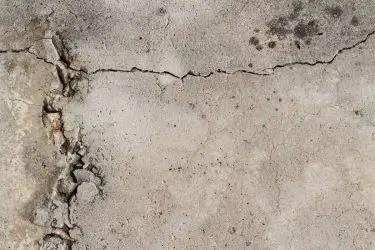Concrete does not naturally bond to most materials after it has cured. However, if you’re using forms made out of wood, it’s important to know that concrete does adhere to them. This could cause a headache once the concrete has dried. Luckily, there are ways to prevent concrete from adhering to wooden forms.
The best way to keep concrete from sticking to wooden forms is to use wood that has been pretreated with release agents so that once the concrete cures, the form can be removed easily. Three types of release agents can be used to treat the forms: Oil-based, Water-based, and Reactive.
If you’re a do-it-yourselfer, then before you begin the concrete-pouring project you’ve been thinking about for a while, understanding what concrete adheres to and what it doesn’t adhere to is important. There are several ways to prevent concrete from sticking to forms.

Table of Contents
What Concrete Doesn’t Adhere To
For starters, concrete that has already gone through the curing process does not adhere to anything. You will need a bonding agent if you want to adhere to other materials to concrete that has dried already.
Here is a list of materials that concrete does not naturally adhere to:
- Existing dry concrete: If you want to pour cement onto existing dried concrete, they won’t join together without a bonding adhesive that is applied to the existing concrete ahead of time.
- Rubber molds: Molds, especially those made from urethane, are designed to resist adhesion to concrete.
- Any oiled surfaces: Oil-based agents applied to surfaces where you pour your concrete will resist adhesion.
- Mortar: Both concrete and mortar contain cement and some mortar mixtures are more resistant to bonding with concrete than others.
- Glue: Most glue will not bond with concrete, although several types of glue are designed with bonding agents to stick to concrete.
- Paint: Similar to the others on this list, paint has no bonding agent to stick to concrete. Look for paint that needs bonding adhesive to stick to concrete.
What Concrete Adheres To

The one major type of form to which concrete does adhere is wood. Wood is the most common material used in forms to hold concrete as it cures in such projects as sidewalks or foundations. It’s easy to use and it’s cheap.
Since wood is used on a lot of small-scale (and some large-scale) concrete projects, this can end up being a problem if, after the concrete cures, it gets stuck to your wooden form. To prevent it from getting stuck, wood is often treated with agents beforehand.
Water-Based Release Agent
As the name suggests, these types of release agents use water as their main ingredient as opposed to oil. They also include plant-based materials. If the wood you’re using as a form for your concrete has not been treated with a release agent, one of the best agents to use would be a water-based one.
Water-based agents are more eco-friendly and include materials like vegetable oils that don’t stain the concrete or release volatile organic chemicals into the air. And because concrete uses water in its solidifying reactions with cement, these types of agents work better with concrete’s chemical makeup.

Water-based agents tend to be the most complex of the agents and manufacturing them becomes more difficult and expensive. They also tend to be more difficult to apply to the wood as opposed to oil-based agents because it’s more difficult to create a film on the wood to protect it from the concrete.
Oil-Based Release Agent

These types of agents are also called “Barrier-type” form release agents. All oils are naturally resistant to concrete adhesion. If you’re about to start a project like building a home, before you purchase the wood, make sure it is stick-resistant.
Any general-purpose release agent will do. There are blends out there that include oils like linseed oil, paraffin, mineral oil, or oil-based emulsion. Whatever you decide to use, it needs to be able to penetrate the wood and leave a smooth film on it to protect it from the concrete. Be aware that most of these oil-based release agents will not work on other forms like steel.
If you want to extend the life of the stick-resistant wood, it would be ideal to add additional coats of release agents. One caveat to oil-based release agents is that they tend to release volatile organic chemicals into the air, which contributes to smog. These may be highly regulated in your area and it’s best to check first before using them.
Reactive Release Agent
This third and final release agent uses chemicals that combine with the lime in fresh concrete to prevent adhesion to the wood. It contains fatty acids that react to the alkalinity in the concrete and prevents adhesion and staining from occurring.
The agents form a soapy membrane over the wood that prevents the concrete from getting into the cracks and pores. When the forms are removed, the concrete that remains has a clean, white color and is free of stains or discoloration. These types of agents can be applied to both wood and steel-type forms.
Release Agents Found At Home
If you’re lacking the above-mentioned release agents, there are some solutions you can find lying around the house with which you can coat the wood and prevent adhesion.
If you keep motor oil, kerosene fuel, or diesel fuel around the house, these can be used to create an oily film on your wood and prevent them from sticking. Unfortunately for most of these types of household products, they are not as eco-friendly and they can contribute to the health and environmental problems. Use these with care and only if there are no other options.

Most households have vegetable oil in their kitchens. You may need a lot of it since it needs to penetrate the wood and leave a film on the surface of it. This probably the most eco-friendly option available to you.
Lastly, you can use polyethylene plastic sheeting to cover the wood. It naturally resists the concrete and you can reuse the sheeting once you’ve completed the project.



